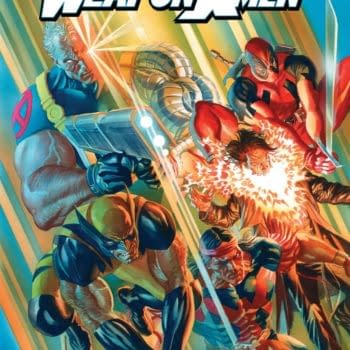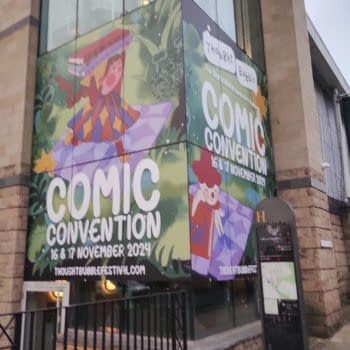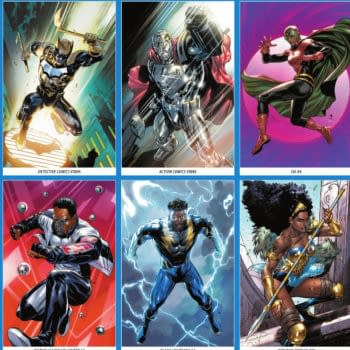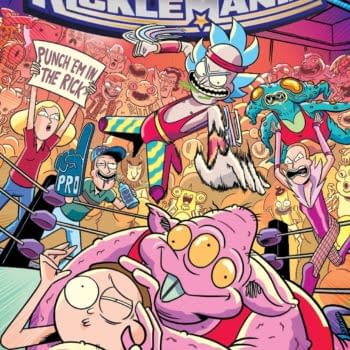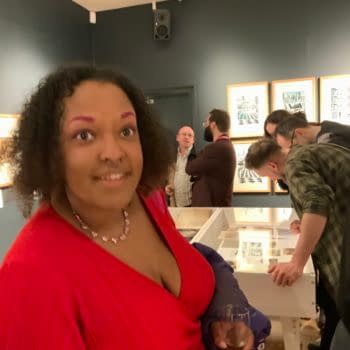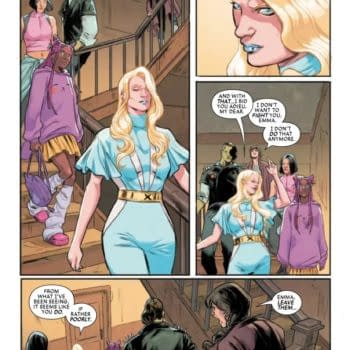Posted in: Comics | Tagged: books, entertainment, jk rowlig, roald dahl
Roald Dahl & J.K. Rowling – Who Is The Most Influential Children's Author?
Images from Wikimedia: J. K. Rowling / Roald Dahl
Elizabeth Grey writes,
As Dahl Day is with us (it's his 99th birthday today), we ask: "Who is the more influential children's author?"
It's 25 years since the death of Roald Dahl, the creator of much-loved children's stories such as Willy Wonka and the Chocolate Factory, Matilda and The Witches. After a successful spell as a flying ace in the RAF Roald Dahl created countless memorable stories which resonate with audiences as well today as when they were written.
Testament to this is the fact that Dahl's work is still producing films, stage plays and even apps. Twisted fairy tales like James and the Giant Peach, The Twits and The B.F.G. are fondly remembered and embraced by children and grown-up children alike.
JK Rowling's story is not so different, as her Harry Potter series was enjoyed by people of all ages. Arguably Harry Potter created a new high water mark in children's literature; the series was so popular that bookshops around the world held events to coincide with hotly-anticipated midnight book releases.
Some people have drawn attention to similarities between the two author's work, in particular the Dursley family from Harry Potter, who replicate some of the nightmarish qualities exhibited by characters from Dahl novels such as Matilda and James and the Giant Peach.
And there's lexicon; Dahl defined new words such as snozzcumbers (a particularly ugly type of vegetable), frobscottle (a soft drink) and bootbogglers (military). Rowling did it too, working equally memorable terms like quidditch (a sport), niffler (magical creature) and gillyweed (plant) into the Harry Potter series .
While Dahl devoted his life to writing children's novels, since the Harry Potter series Rowling has focused on penning books for adult audiences, with more limited success. Children grew up with Harry Potter, and this was reflected in the reading age and size of the books as they came out. Arguably Roald Dahl kept doing the same thing, but it already had a wider appeal.
Rowling's desire to write for older readers can be seen throughout Harry Potter too. Compared to Dahl's, Rowling's characters matured over the series and dealt with more grown-up problems: death, sorrow, heartbreak, loss, even emotional stability (Harry Potter has somewhat of a breakdown in the fifth novel). These are very adult issues that may explain why the series had such a high adult readership.
While both Dahl and Rowling's works have dark elements, it is a darker reality that is portrayed in Harry Potter, often with echoes of some of humanity's darkest elements including ethnic cleansing, violence and torturous spells. While both authors concern themselves with fantasy worlds, Harry Potter is far darker in a more plausible and relevant way.
Arguably JK Rowling has had a much bigger influence thanks to a wider readership, and because Harry Potter is more pervasive within our society/culture as a whole, e.g. people who may never have read a Harry Potter novel will know what "quidditch" is. There are Harry Potter theme parks, encyclopaedias and university courses. Rowling, like her inspiration Tolkien, created a whole world that others have chosen to inhabit.
While Roald Dahl stories continue to be turned into films, they have not had the same impact as Harry Potter. Both authors were granted OBEs for their work, but Dahl refused his because he wanted a knighthood.
That said, as the years pass fewer children are reading Roald Dahl and J K Rowling alike, being replaced by Rainbow Magic and Tracey Beaker, for example. The true test of how influential either author is cannot is to come – longevity.








